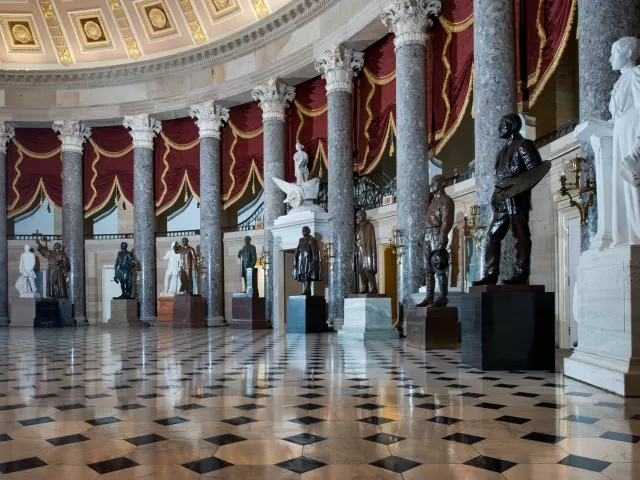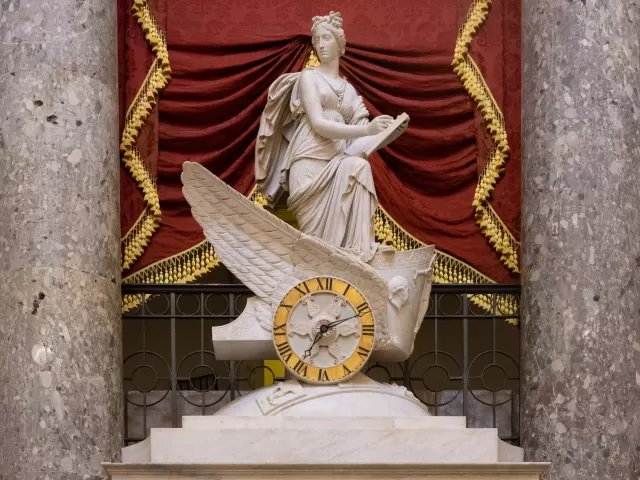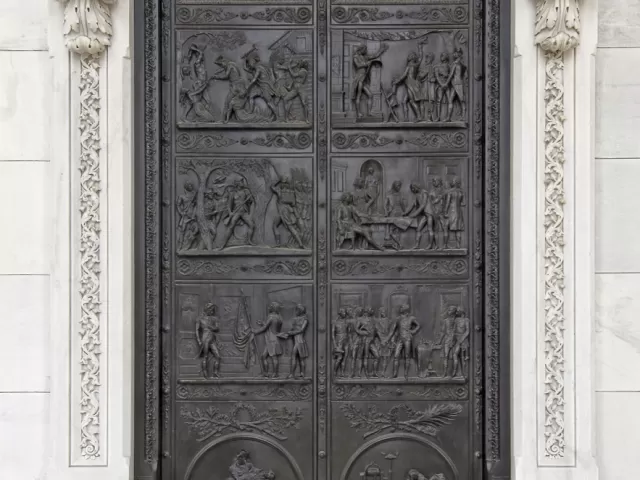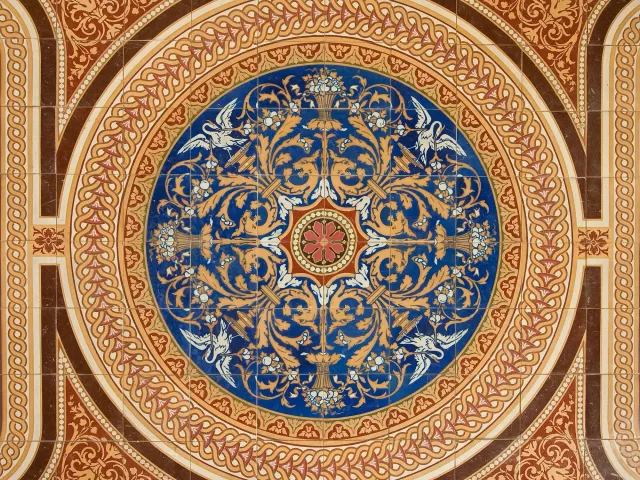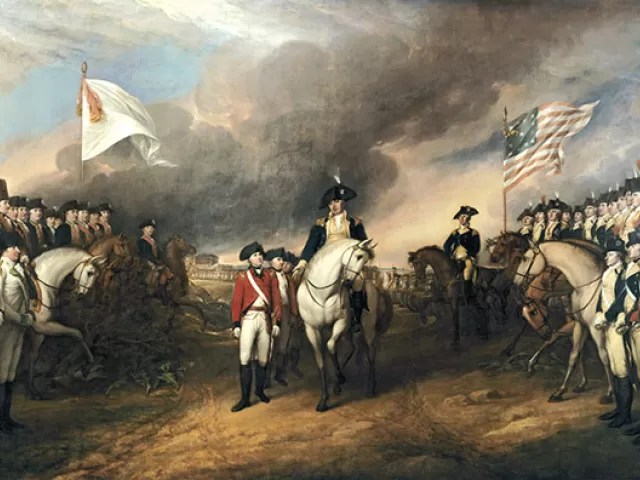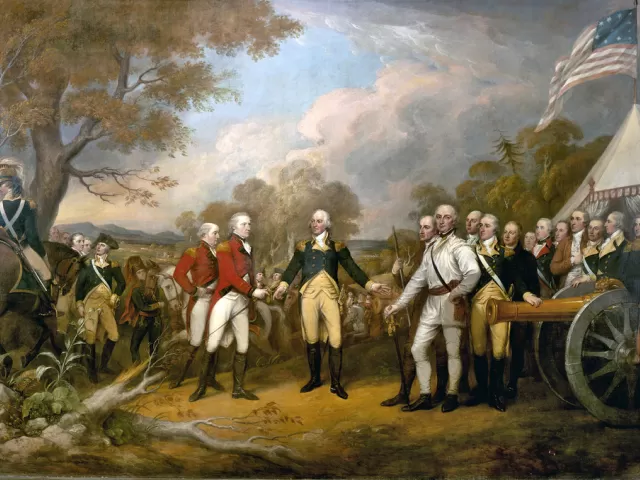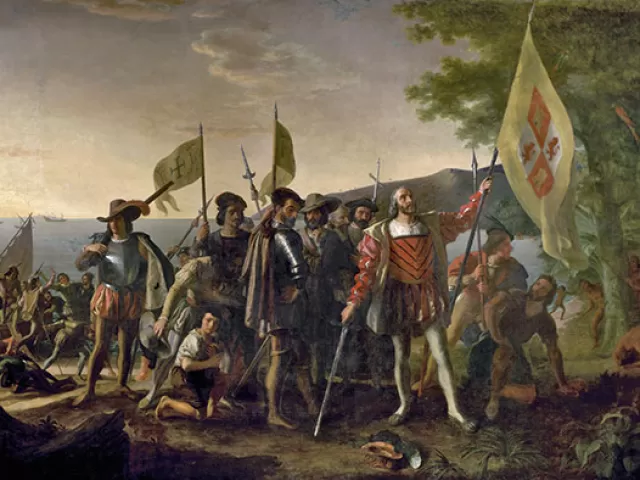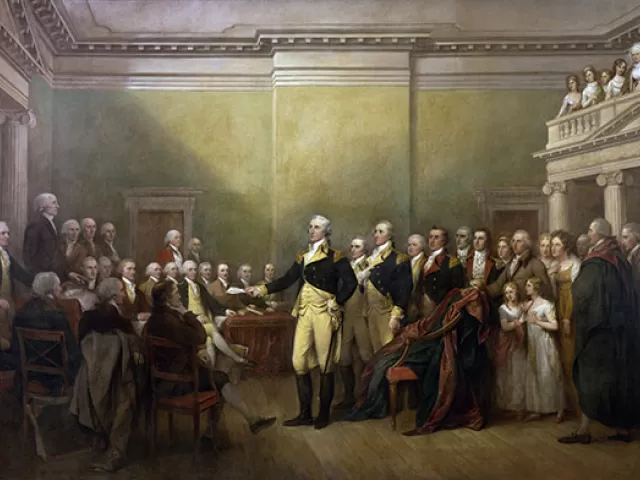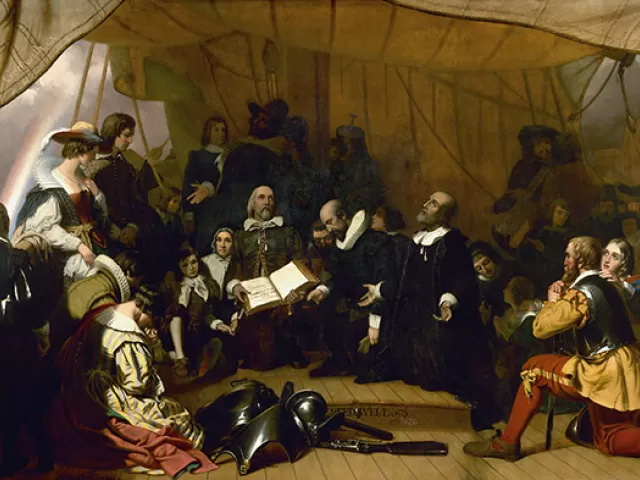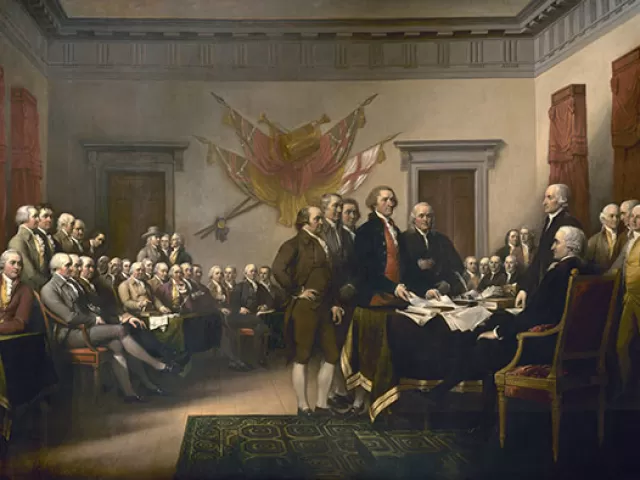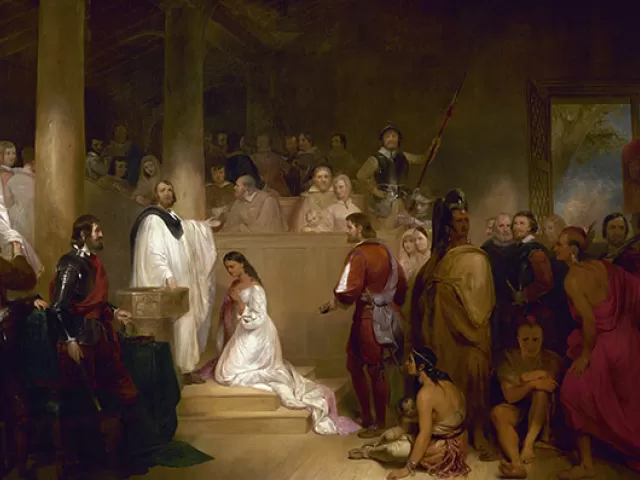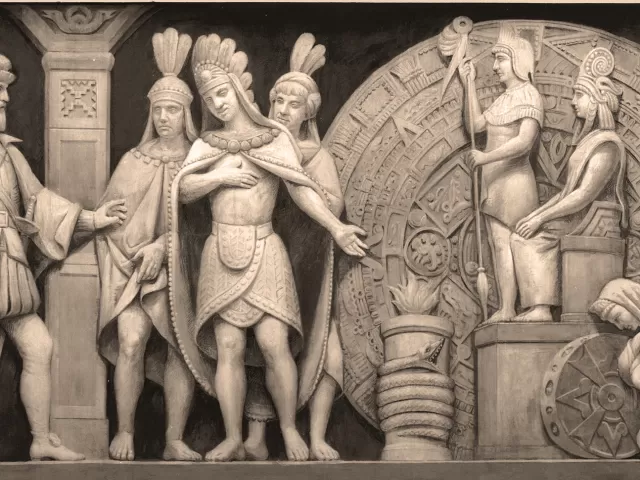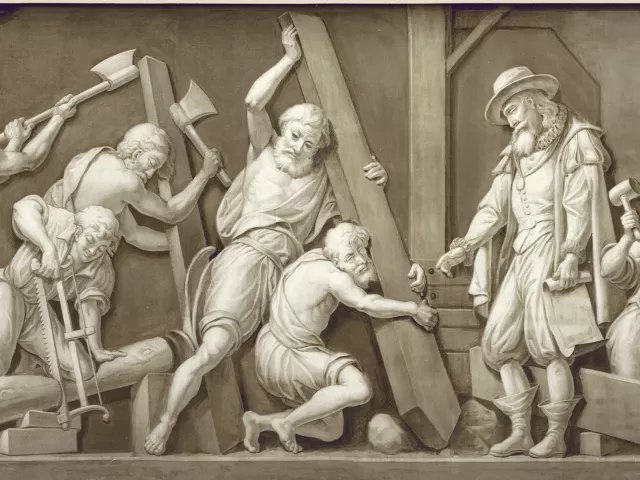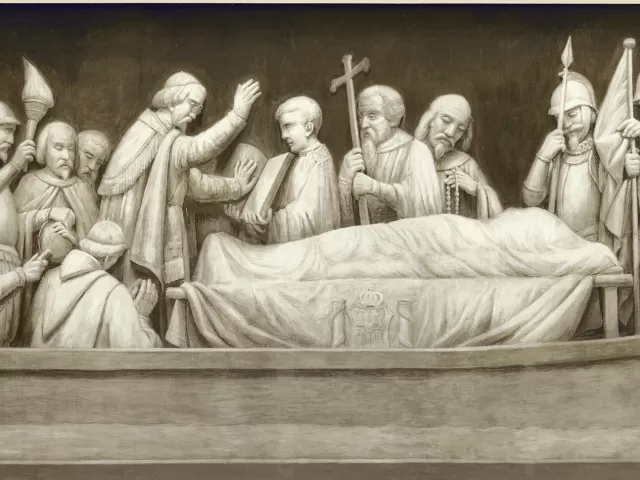Displaying 451 - 470 of 470 Clear
Highlight
Painted in 1865 by Constantino Brumidi, the Apotheosis of Washington in the eye of the U.S. Capitol Building's Rotunda depicts George Washington rising to the heavens in glory.
Highlight
The National Statuary Hall Collection is comprised of statues donated by individual states to honor persons notable in their history.
Highlight
The marble Car of History by Carlo Franzoni (1789-1819) is located above the north door to National Statuary Hall (the Old Hall of the House of Representatives) in the United States Capitol.
Highlight
The bronze doors of the House wing are comparable to those in the Senate. Each valve consists of three panels and a medallion depicting significant events in American history.
Highlight
The Magna Carta display in the Crypt of the United States Capitol features a replica of the English document whose principles underlie much of the Constitution of the United States. The entire display was made in England by the artist Louis Osman and was presented to the United States as a gift from
Highlight
The richly patterned and colored Minton tile floors are one of the most striking features of the extensions of the United States Capitol. They were first installed in 1856, when Thomas U. Walter was engaged in the design and construction of vast additions to the Capitol (1851-1865). For the floors
Highlight
This bronze chandelier provides light for the President's Room of the U.S. Capitol.
Highlight
The bronze doors of the Senate wing are comparable to those in the House. Each valve consists of three panels, depicting events in the life of George Washington and Revolutionary War scenes, and an allegorical medallion.
Highlight
This chandelier has hung in the Small Senate Rotunda since 1965. Imported from Europe in 1903, it previously hung in a historic Baltimore theater and a Capitol Hill church. Originally smaller, it has been enlarged and modified over its history.
Highlight
The painting Surrender of Lord Cornwallis by John Trumbull is on display in the Rotunda of the US Capitol. The subject of this painting is the surrender of the British army at Yorktown, Virginia, in 1781, which ended the last major campaign of the Revolutionary War.
Highlight
The event shown in this painting is the surrender of British General John Burgoyne at Saratoga, New York on October 17, 1777.
Highlight
This painting depicts Christopher Columbus and members of his crew on a beach in the West Indies, newly landed from his flagship Santa Maria on October 12, 1492.
Highlight
The painting General George Washington Resigning His Commission by John Trumbull is on display in the Rotunda of the U.S. Capitol. This painting depicts the scene on Dec. 23, 1783, in the Maryland State House in Annapolis when George Washington resigned his commission as commander-in-chief of the
Highlight
This painting depicts the Pilgrims on the deck of the ship Speedwell on July 22, 1620, before they departed from Delfs Haven, Holland, for North America, where they sought religious freedom.
Highlight
This painting depicts the moment on June 28, 1776, when the first draft of the Declaration of Independence was presented to the Second Continental Congress.
Highlight
This painting depicts the ceremony in which Pocahontas, daughter of the influential Algonkian chief Powhatan, was baptized and given the name Rebecca in an Anglican church.
Highlight
The Spaniard Hernando Cortez, conqueror of Mexico, enters the Aztec temple in 1519. He is welcomed by Emperor Montezuma II, who thought Cortez was a god. The calendar stone and idols are based on sketches that artist Constantino Brumidi made in Mexico City. (1520)
Highlight
Early settlers cut and saw trees and use the lumber to construct a building, possibly a warehouse for their supplies.
Highlight
Spanish explorer Hernando DeSoto died of a fever while searching for gold in Florida and the territory north of the Gulf of Mexico. To protect his body from enemies, his men buried him at night in the Mississippi River, which he had been the first European to discover. (1542)
Highlight
General Winfield Scott is shown during the Mexican War, entering the capital. Peace came in 1848 with the Treaty of Guadalupe Hidalgo, which fixed the Mexican-American border at the Rio Grande River and recognized the accession of Texas. The treaty also extended the boundaries of the United States

